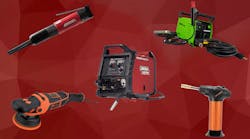Aluminum is closing in on silver bullet status for the auto industry.
The industry has long viewed the metal as a way to make vehicles lighter and more fuel efficient, but obstacles such as cost and manufacturing technology relegated it to niche applications, usually luxury vehicles, while steel remained the material of choice for the majority of the industry.
Conventional wisdom was thrown out the window in January when Ford unveiled the 2015 F-150 with an aluminum body. It will go into production later this year and Ford will build more than 700,000 of them annually, relying on internal research that 80 percent of truck buyers want better fuel economy and appreciate the properties of aluminum that doesn't rust or dent.
Fiat Chrysler Automobiles CEO Sergio Marchionne said the next-generation Ram pickup in 2017 could also use aluminum if it looks like Ford's trucks are a runaway success. But Chrysler might focus its aluminum strategy on the next Jeep Wrangler, Marchionne has hinted. The new Chevrolet Corvette has an aluminum body. The expectation is the next generation of GM's full-size pickups will also switch to aluminum bodies.
It all underscores aluminum's entry to the industry's mainstream.
"We're seeing a shift from steel to aluminum," said Scott Jacobson, senior manager with consulting firm KPMG in Chicago.
By 2025, 18 percent of all vehicles will have all-aluminum bodies, up from less than 1 percent now, according to a recent report from Ducker Worldwide.
The industry is now engaged in a conversation about the pratfalls and possible solutions of using aluminum on a high-volume vehicle. The challenges are being solved with new ways of joining aluminum and steel, manufacturing with speed and efficiency, crashworthiness and repairability, cost and consumer acceptance.
Ducker forecasts that next-decade aluminum will be used for 75 percent of the panels and parts on pickups, 24 percent of large cars, 22 percent of SUVs and 18 percent of minivans.
The F-150 is an industry catalyst, said Gary Silberg, national auto industry leader at KPMG. "They're figuring it out. People are studying it and making it a reality."
"Larger vehicles benefit most," Jacobson said. As they shed weight, they can use smaller chassis, engine, brakes and other components, which reduces overall cost.
Suppliers are making components and modules of the lighter-weight material.
Magna partnered with Ford to create a lightweight concept of a Fusion sedan that is 24 percent lighter after it was torn down and built back up with new materials, said Swamy Kotagiri, Magna's chief technical officer.
Three of seven prototype research vehicles built at Magna's Troy center using lighter materials are undergoing rigorous testing of everything from durability to mileage, Kotagiri said. The project, cofunded by the Department of Energy, is designed to benefit the industry by creating a lighter sedan that is affordable, said Del Matharoo, Magna vice president of engineering.
Bill Ford, in a July 7 guest editorial in the Wall Street Journal, said meeting demand for greater efficiency "requires more than changes to engines and energy sources. New materials and manufacturing processes will reshape auto manufacturers and the suppliers we have worked with for decades. Aluminum and high-strength steel will evolve as the materials that serve as the backbone of the industry."
The F-150 has a high-strength steel frame and a cab and bed made entirely of aluminum alloys. It weighs 700 pounds less than the 2014 model. Aluminum accounts for 70 percent of that reduction.
"Aluminum is the right answer for the truck body," said Randy Visintainer, director of Ford Research and Innovation. "It doesn't mean it is the right answer for all vehicles."
The F-150 has been at least four years in the making. Ford teams worked on such challenges as how to weld, rivet, glue and coat pieces to avoid corrosion where steel and aluminum meet. Others tackled the best way to assemble the truck and configure tooling at truck plants in Dearborn and Kansas City.
The truck was also built for ease of repair at dealerships and collision shops without exorbitant cost to owners.
"The learning curve on this is just starting," said Mike VanLoo, director of business services for Autometric Collision in Pontiac, which has nine locations and 20 years' experience with aluminum repair. "If someone said we'd be riveting and gluing cars together 25 years ago and it is stronger than actual welding, I wouldn't have believed it." .
He does not see the repair cost being much higher because some steps used when working with steel are eliminated. Damaged parts can be removed and new ones riveted quickly.
Workers at VanLoo's shops will be trained to Ford certification and they will have the necessary tools such as self-piercing rivet guns. Unequipped shops will need to invest about $70,000. Ford will partially subsidize the cost.
But certification is not mandatory and that has VanLoo worried.
"We'll see some incredibly poor repairs by shops who didn't spend time on proper training," he said.
I-CAR, a nonprofit organization for the collision repair industry, has developed a customized course for Ford and will offer certification for those who will repair the aluminum F-150.
John VanAlstyne, head of I-CAR, said planning started years before the truck was unveiled. There is a six-hour course focused on the F-150, including joining practices with aluminum. The first courses started in June, he said.
There are about 35,000 repair shops in the U.S., and only 20 percent of dealers have their own collision shops, VanAlstyne said.
Raj Nair, Ford's head of global product development, said as repair shops gain knowledge and experience of the tools and work required, they will meet the challenge.
Copyright 2014 - Detroit Free Press

